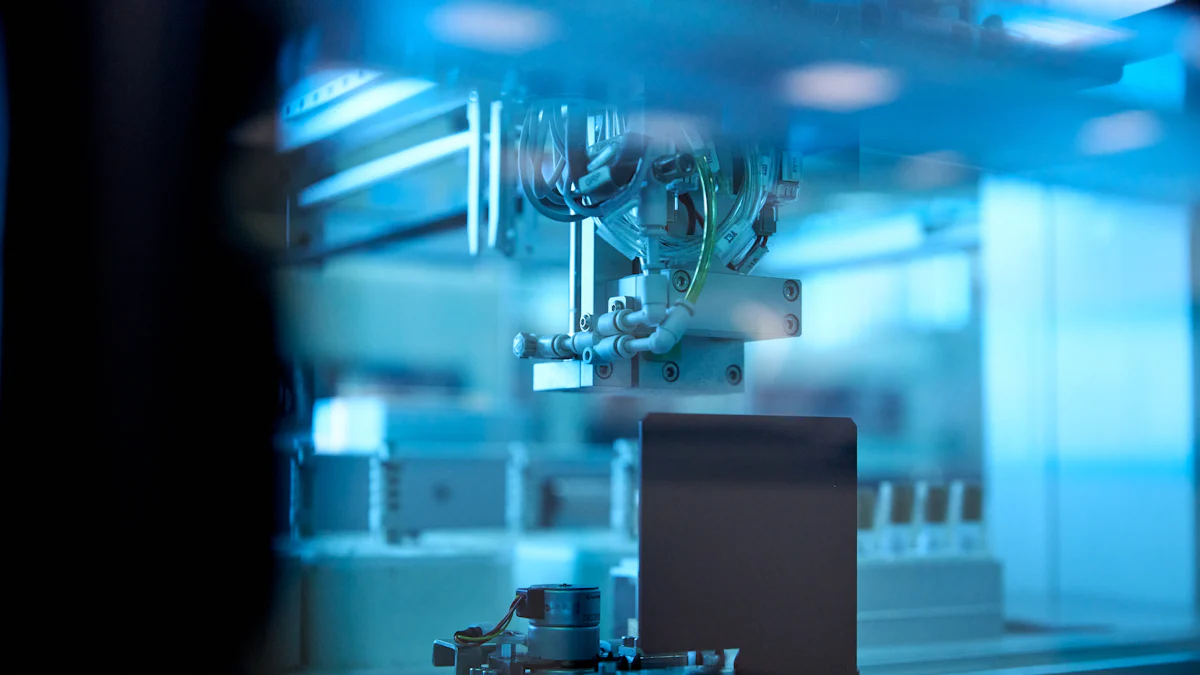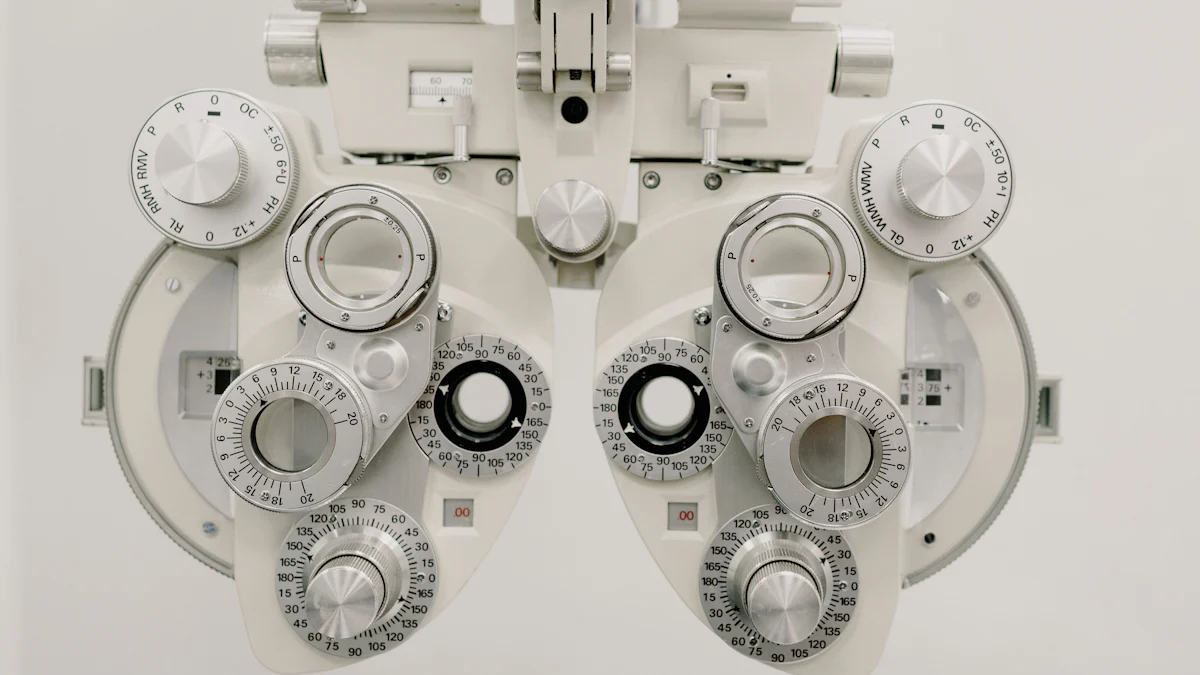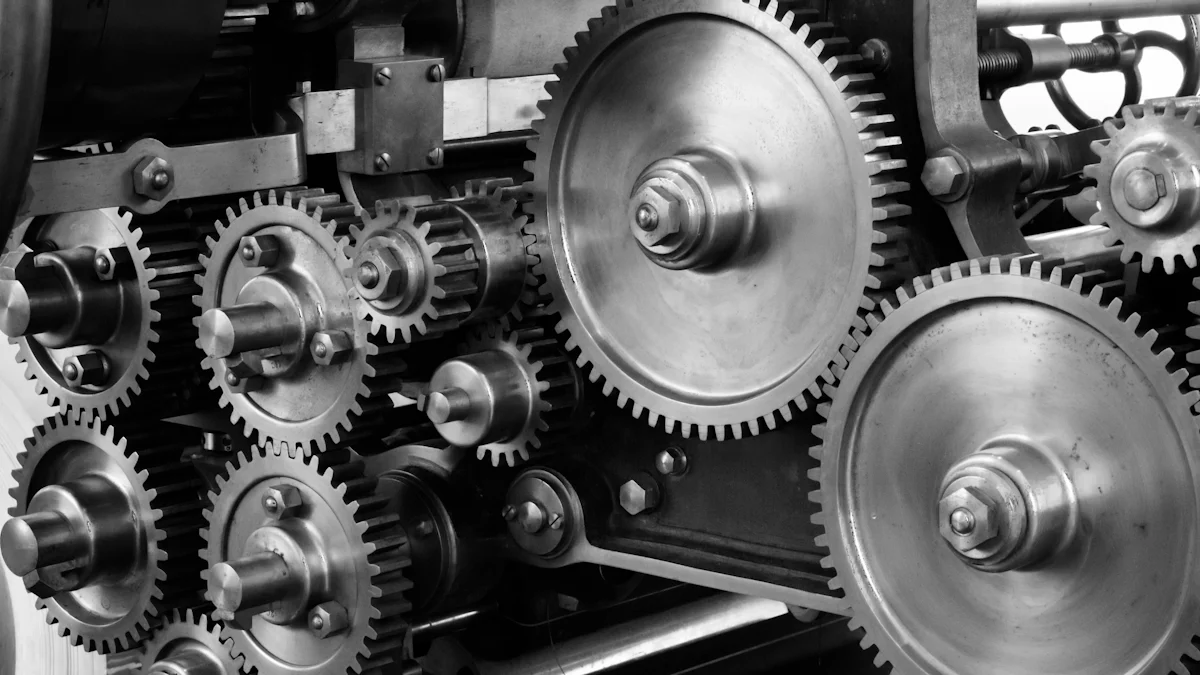Effective Tips for Using Friction Testers

Friction testers serve as vital tools in evaluating the sliding and static friction of materials. These devices play a crucial role in ensuring the quality and performance of products across various industries. The packaging and manufacturing sectors heavily rely on friction testers to maintain safety and quality standards. Friction testers help assess the frictional characteristics of surfaces, which is essential for product durability and safety. The integration of advanced sensors enhances the accuracy and efficiency of these testers. Understanding the friction properties aids in selecting suitable materials for specific applications, thereby optimizing product performance.
Understanding Friction Testers

What Are Friction Testers?
Definition and Purpose
A friction tester measures the friction between two surfaces. This device evaluates both sliding and static friction. Industries use friction testers to ensure product quality and performance. The Coefficient of Friction Tester is a common type. This tester provides data on the resistance between surfaces. Accurate measurements help in selecting materials for specific applications.
Types of Friction Testers
Different types of friction testers exist for various applications. The Continuous Friction Tester analyzes surface friction characteristics. This tester is essential for road safety assessments. The Friction Tester for Metal Forming monitors friction in metal processes. Instruments like the Heidon H94Ai and Heidon H37 3D Muse Tribometer are popular choices. The Friction Tester for Cosmetics evaluates cosmetic products. This tester ensures smooth application and quality control. The Surface Friction Tester measures resistance between surfaces. This tester is crucial for material testing. The Locked Wheel Friction Tester assesses road pavement friction. Many countries rely on this method for road safety.
Importance in Industry
Role in Packaging
The packaging industry benefits greatly from friction testers. These devices evaluate the frictional properties of packaging materials. Proper friction levels ensure safe handling and transportation. Friction testers help in selecting materials with optimal friction. This selection enhances product safety and durability. Manufacturers rely on friction testers to maintain quality standards. Accurate friction measurements prevent packaging failures.
Role in Manufacturing
Manufacturing processes require precise friction measurements. Friction testers play a vital role in this sector. These devices help in optimizing production processes. Proper friction levels improve product performance and longevity. Friction testers aid in material selection for manufacturing. This selection ensures compatibility and efficiency. Regular friction testing identifies potential issues early. Manufacturers can address these issues before they affect product quality.
Key Parameters Measured
Coefficient of Friction
Static vs. Kinetic Friction
Friction testers measure both static and kinetic friction. Static friction refers to the resistance that prevents surfaces from sliding past each other. Kinetic friction occurs when surfaces are already in motion. Understanding these two types of friction helps in evaluating material performance. Accurate measurements of static and kinetic friction ensure product safety and reliability.
Measurement Techniques
Various techniques exist for measuring the coefficient of friction. The most common method involves using a tribometer. Tribometers quantify friction by measuring the force required to slide one surface over another. The testing process often includes a weighted sled that moves across a sample. This method provides precise data on frictional forces. Consistent measurement techniques lead to reliable results.
Other Critical Measurements
Surface Roughness
Surface roughness significantly impacts frictional properties. Friction testers assess the texture of a material's surface. A rough surface increases friction, while a smooth surface decreases it. Accurate measurement of surface roughness aids in material selection. Understanding surface characteristics ensures optimal product performance.
Material Compatibility
Material compatibility is crucial in friction testing. Friction testers evaluate how different materials interact with each other. Compatibility affects the durability and effectiveness of products. Testing ensures that materials work well together in specific applications. Proper assessment of material compatibility enhances product quality and longevity.
Practical Tips for Effective Use
Sample Preparation
Cleaning and Conditioning
Proper sample preparation ensures accurate friction testing results. Begin by cleaning the surfaces of the materials to remove any contaminants. Use a mild detergent and water to clean the samples. Dry the samples thoroughly before testing. Conditioning the samples involves exposing them to controlled environmental conditions. This step stabilizes the material properties for consistent results.
Proper Handling Techniques
Handle samples with care to prevent damage. Use gloves to avoid transferring oils or dirt from hands to the samples. Secure the sample properly on the testing apparatus. Ensure that the sample lies flat and does not shift during testing. Proper handling techniques maintain the integrity of the test results.
Testing Methods
Standardized Procedures
Standardized procedures provide a framework for consistent testing. Follow industry standards such as ASTM or ISO guidelines. These standards outline specific steps for conducting friction tests. Use the same equipment and settings for each test. Consistency in testing methods ensures reliable data.
Custom Testing Protocols
Custom testing protocols cater to unique material requirements. Develop protocols based on specific application needs. Adjust variables such as speed, load, or temperature to suit the material. Document each step of the custom protocol for repeatability. Custom protocols offer flexibility in testing diverse materials.
Equipment Maintenance
Regular Calibration
Regular calibration maintains the accuracy of friction testers. Schedule calibration at regular intervals based on usage. Use certified calibration tools to adjust the equipment. Calibration ensures that the measurements remain precise over time. Accurate equipment leads to trustworthy test results.
Troubleshooting Common Issues
Troubleshoot common issues to keep the equipment functioning. Check for loose connections or worn parts regularly. Replace damaged components promptly to prevent errors. Consult the equipment manual for guidance on troubleshooting. Regular maintenance extends the lifespan of friction testers.
Benefits of Regular Friction Testing

Early Identification of Material Issues
Regular friction testing helps identify material issues early. Manufacturers can detect problems before they escalate. Early detection prevents costly product recalls. Friction testers provide accurate data on material performance. This data aids in making informed decisions.
Case Studies
Case studies highlight the importance of friction testing. A packaging company improved product safety through regular testing. The company identified a material flaw early. This proactive approach saved significant costs. Another case involved a cosmetic brand. The brand used friction analyzers to enhance product quality. The analyzers reduced guesswork in product development.
Real-world Examples
Real-world examples show the value of friction testing. A car manufacturer improved tire performance through testing. The manufacturer identified issues with tire materials. Early identification led to better product design. Another example involves a textile company. The company used friction testers to improve fabric durability. The testers helped select materials with optimal friction properties.
Enhancing Product Quality
Friction testing enhances product quality significantly. Testing ensures materials meet industry standards. High-quality products lead to customer satisfaction. Consistent testing helps maintain quality over time.
Performance Optimization
Performance optimization is a key benefit of friction testing. Testing provides insights into material behavior. Manufacturers can optimize products for specific applications. Improved performance leads to increased market competitiveness. Friction testers help achieve these goals efficiently.
Cost Efficiency
Cost efficiency is another advantage of regular testing. Identifying issues early reduces production costs. Manufacturers avoid expensive redesigns and recalls. Testing ensures materials are used effectively. Efficient use of materials leads to cost savings. Friction testing supports sustainable manufacturing practices.
Friction testers play a vital role in ensuring product quality across industries. You can enhance testing accuracy by following practical tips such as proper sample preparation and regular equipment maintenance. Implementing these strategies leads to improved product performance and cost efficiency. Manufacturers benefit from early identification of material issues, which prevents costly recalls. Cross-industry collaborations offer opportunities for innovation in friction testing technology. These partnerships drive the development of more accurate systems. Embrace these insights to optimize your testing processes and achieve superior results.